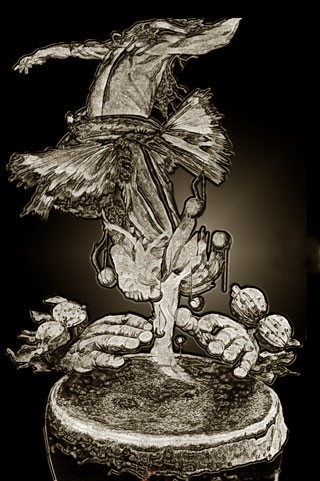
Short answer:
People come together for rhythm and dance to relax and move together. They relax their preoccupations, problem solving mind and usual notions of who they are to allow a deeper wisdom to percolate up in an atmosphere of emotional support. It is not a drum circle. The drummers are experienced musicians, for instance in the Congolese tradition. It is compatible with organized religions such as Christianity, Islam or Buddhism.
Longer answer:
From our very beginnings we humans have used rhythm and dance to help ourselves become wiser, more helpful people and to help individuals and groups deal with difficult issues. In Congo, as well as throughout the Bantu expansion in Central and Southern Africa, this takes the form of “doing ngoma”. Ngoma is also the word for drum and in Kikongo literally means “giving (the strength of) the panther”.
I worked with Ava Vinesett of the Duke Dance Program, Pline Mounzeo the noted drummer and Mabiba Baegne the well-known dancer and others to see if doing ngoma could be helpful to Americans living in North Carolina. The results were positive. Our volunteers liked it and showed improvements in symptoms of depression and anxiety. They felt healthier and experienced social bonding.
You can read about it here:
https://www.liebertpub.com/doi/pdfplus/10.1089/acm.2014.0247
https://www.liebertpub.com/doi/pdfplus/10.1089/acm.2016.0410
The form of the weekly ngoma gathering used had been modified for Americans and consisted of a brief service derived from Obatala (of Nigerian origin) followed by a period of meditation, yoga, centered prayer or other silent practice. Participants then danced for an hour and a half to drum rhythms of Congo. They took a break in the middle and could rest whenever needed. They then did another period of silence followed by a discussion of their week and how doing ngoma was affecting them. People tried to be supportive of each other.
I think that there are many related practices that help people integrate themselves and untangle what in Zen we sometimes call “the inner tangle and the outer tangle”. Such practices would include meditation, yoga, contemplative Christianity, Sufism, shamanism and spirit embodiment. Which practice is most helpful to an individual may depend on which practices are encountered in life and the person’s affinity for any particular practice.
Ngoma comes from a spirit embodiment tradition. Usually this kind of tradition is not a comfortable fit for Americans, but it depends on how you conceive of it. I find it helpful to look at it this way: Although we tend to imagine ourselves as one type of person, if we look closer we see that we can actually be quite different in different situations. The self is deep and there are even aspects of ourselves neglected in our conventional view of who we are. Yet there is no aspect of self that could not be helpful in some situation. These neglected aspects of self are like spirits waiting to help.
When we face a difficult situation, we may feel at a loss. Yet we could probably be someone who could handle it. One aspect of doing ngoma is letting that person appear. This may be facilitated by the drums. After all, the word “ngoma” literally means “giving the strength of the panther”. Also, ngoma involves meditation while moving, exercise and emotional support.
Why the healing rhythm-dance practices of old were lost in Western culture is unclear. Partly it may have been that they appeared to contradict the religions that became dominant. Also, the political leaders could have seen the leaders in these practices as competitors. We do know that these types of practice in Western culture were suppressed long ago by the powerful, sometimes viciously. Benefiting from them is in our nature and we should return to practicing them sometimes as needed. Using African traditions as models may be a good way to do it.
Ken Wilson, M.D., Professor Emeritus, Department of Medicine, Duke University Medical Center
Contact at nzobi.k@gmail.com
